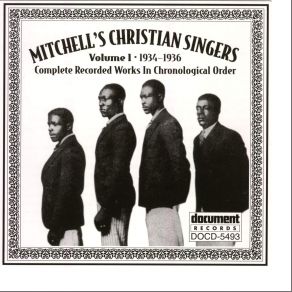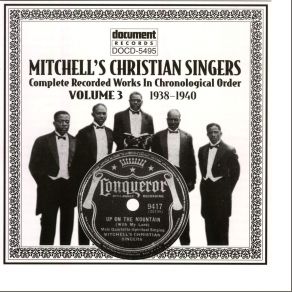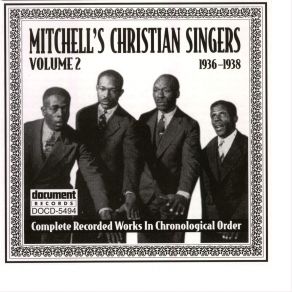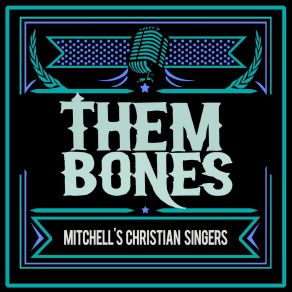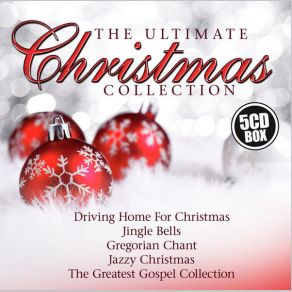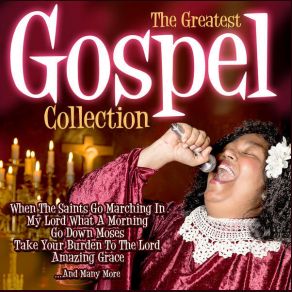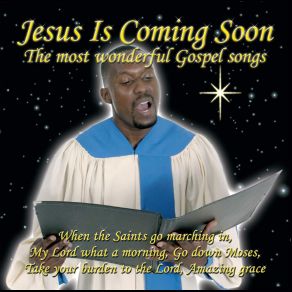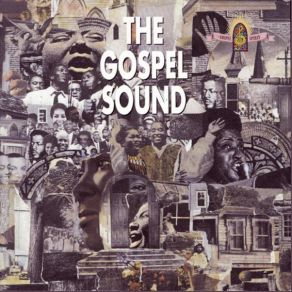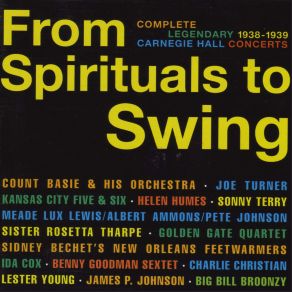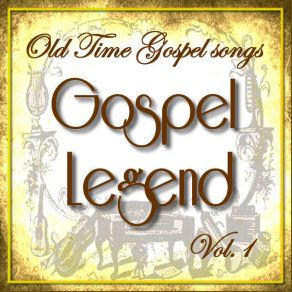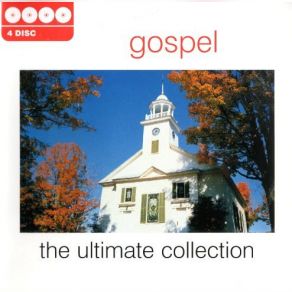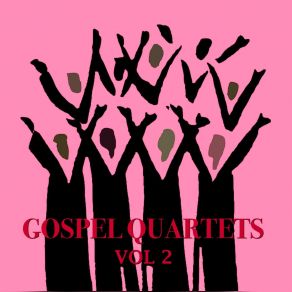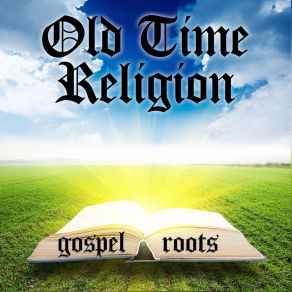Mitchell'S Christian Singers
Wikimp3 information about the music of Mitchell'S Christian Singers. On our website we have 5 albums and 18 collections of artist Mitchell'S Christian Singers. You can find useful information and download songs of this artist. We also know that Mitchell'S Christian Singers represents Blues genres.
Biography
[Edit]A survey of Carolina-based gospel groups active during the first half of the 20th century reveals a regional style and repertoire worthy of closer examination. The a cappella quartet known as Mitchell's Christian Singers was based in the city of Kinston, which is situated in eastern North Carolina by the Neuse River, named for the area's erstwhile inhabitants, the Neusiok Indians. Although this excellent vocal harmony group cut more than 80 sides during the years 1934-1940, none of the members opted for full-time professional musicianship, traveling out of state to make records from time to time, but generally staying close to home. Not surprisingly, the members' full-time employment represented a cross-section of jobs available to African-Americans in North Carolina at that time: tobacco factory laborer, truck driver, stone mason, and coal salesman. Originally the group was known as the New Four Quartet. Their initial contact with the recording industry was instigated by J.B. Long, owner and operator of the United Dollar Store in Kinston and talent scout for the American Record Company. According to bass singer Lewis Herring, after hearing someone else's record of "Dry Bones" the group told Long that they could deliver a superior rendition, and did so a few days later right inside of his store. Convinced by what he heard, Long invited them to perform at his Old Mansion Gospel Convention which was held in June 1934. Dressed up in black shoes, flannel britches, white shirts, double-breasted blue coats, black bow ties, and little white hats with tiny anchors on them, the New Four won the singing contest hands down with their version of "We're Gonna Have a Little Talk with Jesus."
A move to make records in New York caused half of the members to quit the group outright rather than venture outside of Kinston. This left only Herring and baritone singer Louis Panella Davis. The unit was reconstituted with the arrival of Julius Davis and William Brown, a pair of versatile tenors who had sung with the Harmonizing Four. In August 1934, now managed by a former gospel vocalist named Willie Mitchell, the quartet made the long drive to the big city and cut their first 16 sides as Mitchell's New Four Singers under the supervision of producer William Calloway. Provided with seedy lodging and substandard food, the singers were pressed to rehearse for a full half-day before commencing to record; they began singing at 8:00 AM and knocked off at 2:30 in the morning. Although each man received $150.00 for his time, no mention was made of royalties. When they resumed recording in April 1936 as Mitchell's Christian Singers, bass singer Lewis Herring had been replaced by Sam Bryant, and the lineup would remain unchanged for the remainder of the group's professional existence.
More than 80 sides recorded during a six-year period were released on seven different labels owned by the American Record Company. The 78 rpm platters were mainly pressed at a Bakelite-enabled facility owned by the Scranton Button Company. In December 1938, the group was invited to appear at Carnegie Hall as part of John Hammond's Spirituals to Swing concert. Hammond had encountered them on their home turf while traveling through North Carolina in the company of composer Goddard Lieberson, who worked for Columbia Records, helped to introduce the LP and eventually became president of the company. As for Mitchell's Christian Singers, after cutting a dozen sides in Chicago in 1940, they ceased recording altogether and lived out the rest of their lives in Kinston, occasionally performing at churches and community functions. With the exception of one missing title from 1936, their complete works were chronologically reissued in four volumes by Document during the '90s. Some music historians hold that this group's soulful, focused presentation had a direct influence upon early modern gospel and the doo wop vocal harmony technique popularized during the '50s.
Collections
Title: 2012: Soundtrack To The End Of The World
Genre: Pop
Title: The Ultimate Christmas Collection
Genre: Folk
Title: The World Of... The Greatest Gospels
Genre: Gospel
Title: The Greatest Gospel Collection
Genre: Kids
Title: Jesus Is Coming Soon - The Most Wonderful Gospel Songs
Genre: Gospel
Title: Gospel Songs Of Praise
Genre: Gospel
Title: The World Of... Gospel Vol. 3
Genre: Gospel
Title: The Gospel Sound
Genre: Gospel
Title: Gospel Live!
Genre: Gospel
Title: Gospel Legend
Genre: Gospel
Title: Heavenly Gospel Singers
Genre: Gospel
Title: The Ultimate Collection: Gospel 1
Genre: Byzantine/Relegious, Funk
